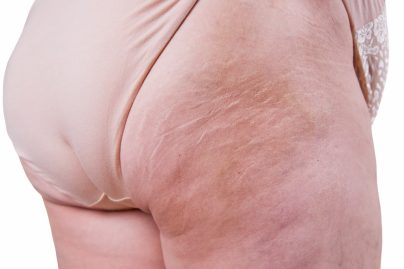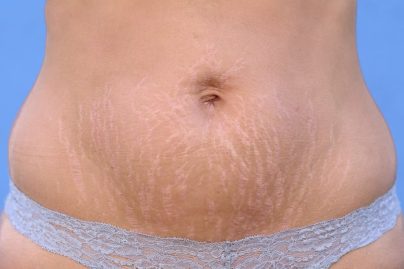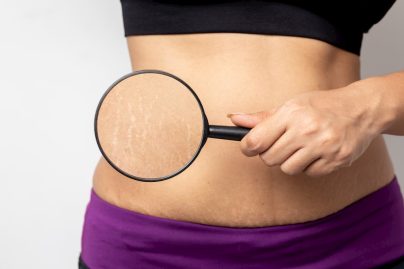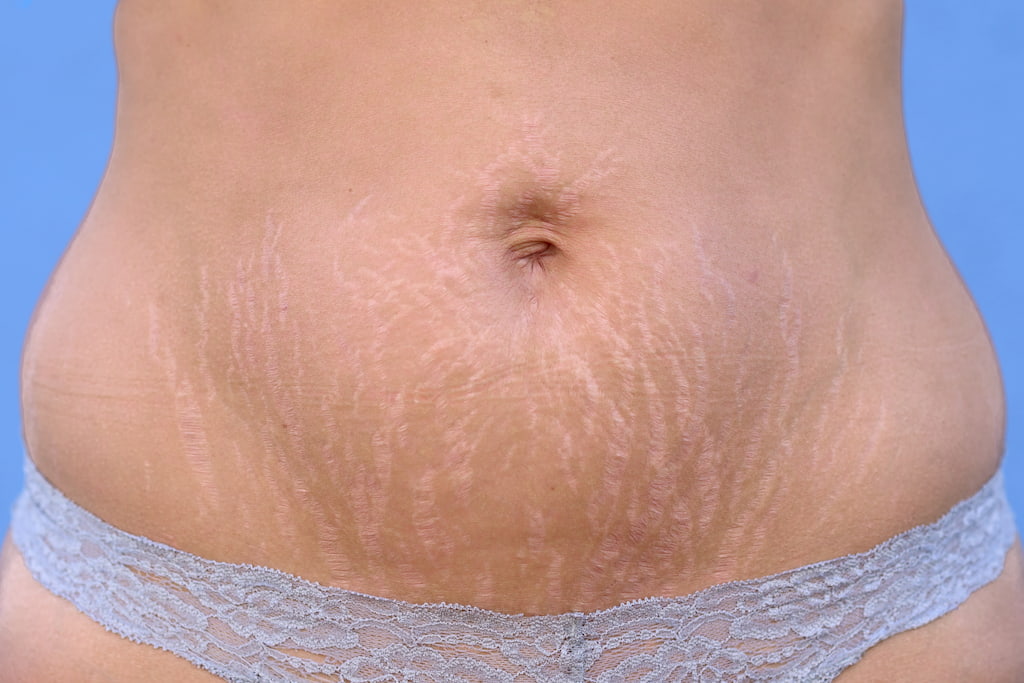Stretch Marks and How to Treat Them
Do you have stretch marks? While there is no miracle cure for these pesky lines or bands that often appear on the surface of the skin, knowing about their science can be empowering and help us to better overcome them. Stretch marks are caused when our skin stretches quickly and excessively beyond its natural limits—growing too fast and making our existing collagen brittle.
This resistance and subsequent tearing cause streaks in the dermis with ultraviolet light causing further pigment changes resulting in white-grey, silver, purple or red streaks. Fortunately, there are treatments that work to reduce their appearance using lasers, creams, microneedling and other methods – some more successful than others depending on your particular situation.
In this blog post, we’ll take a look at understanding how stretch marks form scientifically as well as what are some proven treatments available today to manage them.
What are Stretch Marks and How Do They Form
Stretch marks are a common phenomenon that many people experience at some point in their lives. These marks appear as raised lines on the skin, usually on the thighs, buttocks, breasts, and stomach. While they are more prevalent in women, men can get them too. Stretch marks occur when the skin is stretched beyond its normal capacity, causing the underlying tissues to tear. The marks start off as pink or red lines, and over time, they fade into a silvery color. Although stretch marks are not harmful, they can be unsightly and affect a person’s self-esteem. While there is no surefire way to prevent stretch marks, staying hydrated, eating a healthy diet, and moisturizing the skin may reduce their appearance.
Possible Causes of Stretch Marks
Stretch marks are linear marks that occur when the skin rapidly stretches, causing the collagen and elastin fibers to break.
They often appear during growth spurts, pregnancy, weight gain, or through the use of corticosteroid medication. Hormone fluctuations, such as those that occur during puberty and pregnancy, can also contribute to the development of stretch marks. Genetics can play a role as well, as some people may be more susceptible to having these marks on their skin.
Types of Stretch Marks BULLET POINTS
- Striae rubra: Red or pink coloured marks that appear when the skin stretches.
- Striae alba: Paler, white streaks that develop when collagen and elastin in the skin break down.
- Striae gravidarum: Dark purple or brown streaks that commonly occur during pregnancy.
Different Treatment Options for Stretch Marks
Although stretch marks cannot be completely eliminated, there are several treatments available to reduce their visibility. These include:
a. Creams and Lotions
Creams and lotions are crucial components of skincare that are used to nourish and moisturize the skin. They are an essential part of a skincare routine as they help to trap moisture in the skin, preventing dryness and the formation of wrinkles. Creams and lotions contain various ingredients that work together to soothe, hydrate, and protect the skin from environmental damage. With many different formulas available, it is important to choose the right cream or lotion that complements your skin type and concerns. It is advisable to opt for a non-comedogenic, fragrance-free, and hypoallergenic option. Using creams and lotions daily can leave the skin feeling soft, supple, and healthy-looking.
b. Laser Treatment for Stretch Marks
Laser therapy is a revolutionary treatment that has gained enormous popularity in recent years. This non-invasive procedure is designed to reduce pain and inflammation and speed up the healing process. Laser therapy utilizes high-intensity light in the form of a beam to penetrate the skin and stimulate the body’s natural healing response. This therapy is commonly used to treat a variety of conditions such as arthritis, sports injuries, and chronic pain. With low risks and no side effects, laser therapy is a safe and effective treatment for those seeking natural and alternative treatments. As an increasing number of people search for ways to improve their health and well-being, laser therapy provides a promising solution.
At NovuSkin, our laser treatments are safe, gentle, non-invasive, and most importantly – effective! Our devices are also FDA-approved to give you maximum peace of mind.
c. Microneedling
Microneedling has become one of the most popular skincare treatments in recent years. This minimally invasive procedure involves using tiny needles to puncture the skin, which stimulates the body’s natural healing process and promotes the production of collagen and elastin. The result is a smoother, firmer, and more youthful complexion. Microneedling can also improve the appearance of fine lines and wrinkles, acne scars, and hyperpigmentation. Although it may sound intimidating, the procedure is quite safe and effective when performed by a licensed and experienced aesthetician. If you’re interested in revitalizing your skin and achieving a more radiant glow, microneedling may be the perfect solution for you.
d. Chemical peels
Chemical peels are another option for treating stretch marks. These treatments use a topical solution to remove the top layer of skin, which can help reduce the visibility of stretch marks. Chemical peels come in different strengths and formulas, so it is important to talk to a dermatologist about your specific concerns before deciding which type of peel is best for you. Chemical peels can be used to target areas with sun damage, age spots, wrinkles, and other signs of ageing. They can also be used to improve the texture and tone of your skin. However, this treatment requires a significant commitment in terms of both time and money – meaning it may not be the best option for everyone.
We offer safe and effective chemical peels for a variety of skin types! While chemical peels can help eliminate stretch marks, they also treat an array of other issues such as acne, scarring, discolouration, and more.
Practical Advice for Treating Stretch Marks
Stretch marks can be a common concern for many individuals, but thankfully there are practical ways to treat them. One of the most effective methods is to apply a moisturizer daily to help hydrate the skin and promote elasticity. It’s also important to maintain a healthy diet and exercise routine, as this can help improve overall skin health.
For those who want to take a more targeted approach, there are products on the market that contain ingredients such as vitamin E, collagen, and retinol, which can help reduce the appearance of stretch marks over time. Consulting with a dermatologist may also be helpful in developing a personalized treatment plan.
Regardless of the method chosen, consistency is key when it comes to treating stretch marks, and with patience and diligence, significant improvement can be achieved.
We have a variety of skincare and treatment options available when it comes to targeting stretch marks. Get in touch today and we’ll be happy to offer you a consultation with our highly trained technicians.
Related Articles

What is the best treatment for old stretch marks?
The best treatments for old stretch marks Are you looking for the best treatment option to reduce the appearance of old or mature stretch marks?

Understanding the Science Behind Stretch Marks & How to Treat Them
Stretch Marks and How to Treat Them Do you have stretch marks? While there is no miracle cure for these pesky lines or bands that

Can stretch marks be completely removed?
Stretch Marks Treatment Are you troubled by stretch marks, those stubborn lines of scarring on the skin that can impair self-confidence and make us feel







